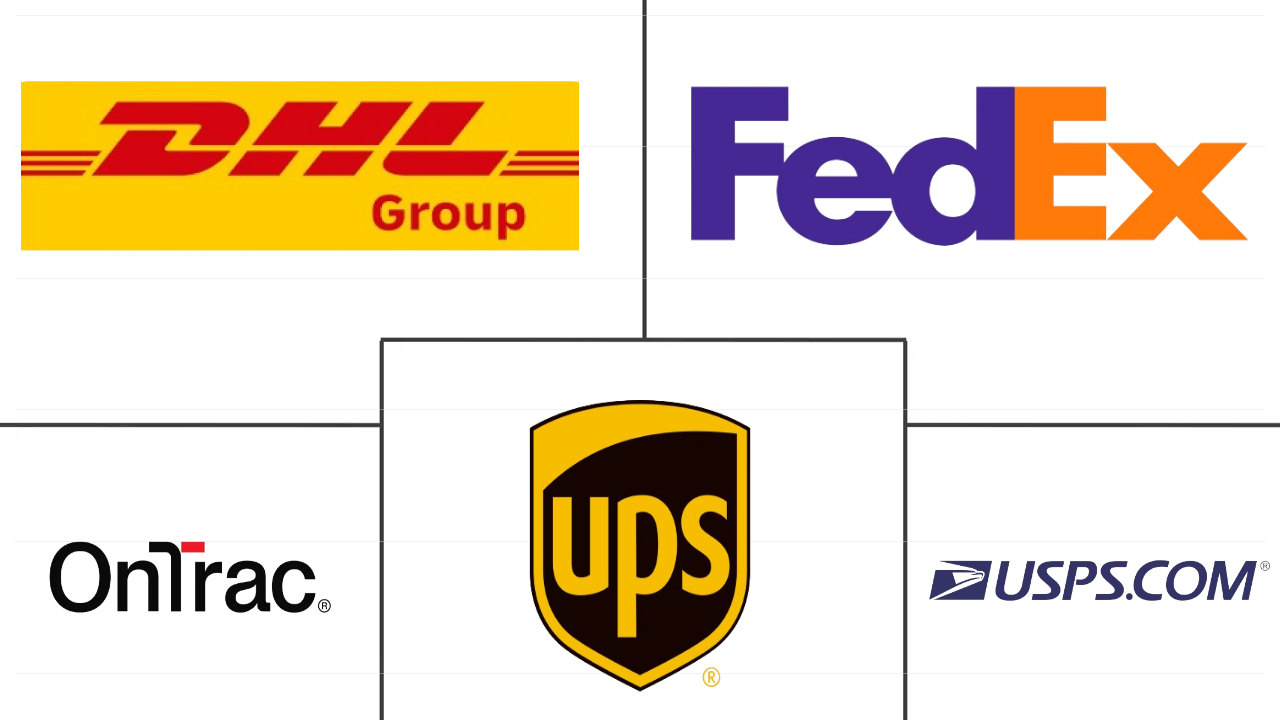Market Size of united states courier, express, and parcel (cep) Industry
| Icons | Lable | Value |
|---|---|---|
|
|
Study Period | 2017 - 2030 |
|
|
Market Size (2024) | USD 183.98 Billion |
|
|
Market Size (2030) | USD 239.38 Billion |
|
|
Largest Share by Destination | Domestic |
|
|
CAGR (2024 - 2030) | 4.48 % |
|
|
Fastest Growing by Destination | International |
Major Players |
||

|
||
|
*Disclaimer: Major Players sorted in no particular order |
US Courier, Express, and Parcel Market Analysis
The United States Courier, Express, and Parcel (CEP) Market size is estimated at 183.98 billion USD in 2024, and is expected to reach 239.38 billion USD by 2030, growing at a CAGR of 4.48% during the forecast period (2024-2030).
183.98 Billion
Market Size in 2024 (USD)
239.38 Billion
Market Size in 2030 (USD)
3.46 %
CAGR (2017-2023)
4.48 %
CAGR (2024-2030)
Fastest Growing Market by Speed of Delivery
5.22 %
Projected CAGR, Express, 2024-2030
Courier companies aim to achieve higher efficiency levels through extended service hours at a lower cost due to significantly increasing demand and intense competition.
Fastest Growing Market by Model
5.83 %
Projected CAGR, Business-to-Consumer (B2C), 2024-2030
Convenience is the major factor driving the segment's growth, wherein the most popular product categories sold online in 2022 were fashion items, toys, and hobby & DIY goods.
Largest Market by Shipment Weight
74.60 %
value share, Light Weight Shipments, 2023
The delivery demand in the banking, financial services, and insurance (BFSI) industry and for over-the-counter pharmaceutical and apparel goods is driving the segment's growth.
Largest Market by End User Industry
42.34 %
value share, E-Commerce, 2023
The top e-commerce players with a significant presence in the country are generating delivery demand for fashion items, toys, and hobby & DIY goods.
First Leading Market Player
38.49 %
market share, United Parcel Service of America, Inc. (UPS), Inc. (UPS)

UPS has an average daily package volume of more than 20 million in its US Domestic Package segment, including around 2 million packages from its Next-day Air segment.
Rising domestic CEP demand led by the rising e-commerce market in the country
- E-commerce growth and the global pandemic fueled the parcel shipping market, as consumers were more inclined toward ordering online compared to purchasing from physical stores. This led to a CAGR growth of 2.62% in value from 2017-2021. With rising revenue and parcel volumes, many companies are undertaking acquisitions in the country. In October 2023, UPS Inc. acquired Happy Returns, a returns management software company, from PayPal Holdings Inc.
- The industry witnessed growth in parcel volumes in 2021 and 2022, owing to the rising e-commerce sales. In 2021, the e-commerce value rose by 22.32% YoY, followed by a 7.87% YoY increase in 2022. This resulted in the growth of CEP volumes. However, despite the overall growth in courier, express, and parcel volumes, there has been a slight decline in employment statistics for the industry. In 2022, there were 68,310 couriers and messengers in the United States compared to 70,700 messengers in 2020. In 2022, postal service workers in the United States earned an average of USD 25.71 per hour.
- The US e-commerce market has been constantly evolving during the study period. B2C e-commerce sales in the United States are projected to grow from around USD 811 billion in 2022 to around USD 1.23 trillion in 2025. This is expected to give a boost to both domestic and international courier, express, and parcel market volumes during the forecast period. Among the e-commerce players, Amazon is the most popular e-retailer in the United States, with a market share of 37.8%. Other successful shopping websites include eBay (3.5% market share), Walmart (6.3% market share), Target (2.1% market share), and Apple (3.9% market share).
